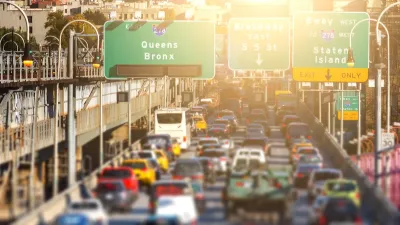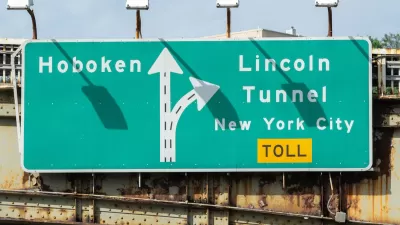The city’s new congestion pricing program, scheduled to take effect next year, could mean billions in new transit funding.

What will New York City’s congestion pricing program—now in its final planning stages—mean for public transit? As Stephen Nessen explains in Gothamist, the program is required by a 2019 state law to “bring in at least $1 billion a year for the MTA.”
Nessen adds, “The agency must use that money to finance $15 billion in bonds to pay for mass transit improvements included in its 2020-2024 capital plan — which was formed in the aftermath of New York City’s 2017 “summer of hell” when the subways and commuter railroads fell into disrepair.” The money will fund the expansion of the Second Avenue subway, the Penn Access project, and accessibility improvements at subway and Long Island Rail stations, as well as more electric buses. The article points out that congestion pricing revenue cannot legally be used for balancing the agency’s operating deficit, as some critics have claimed.
The next step is coming up with a price structure and exempt groups. Already, “Drivers won’t pay if they remain on the West Side Highway or FDR Drive south of 60th Street. Low-income drivers who live in the congestion zone, emergency vehicles and cars transporting people with disabilities are also exempt.” New Jersey officials say Garden State residents who commute to New York should receive discounted rates, although a 2021 analysis revealed that, of the 1.6 percent of New Jersey commuters who would likely pay the toll, most are more affluent than the average resident.
FULL STORY: MTA’s congestion pricing plan means big upgrades for NYC transit

Alabama: Trump Terminates Settlements for Black Communities Harmed By Raw Sewage
Trump deemed the landmark civil rights agreement “illegal DEI and environmental justice policy.”

Planetizen Federal Action Tracker
A weekly monitor of how Trump’s orders and actions are impacting planners and planning in America.

The 120 Year Old Tiny Home Villages That Sheltered San Francisco’s Earthquake Refugees
More than a century ago, San Francisco mobilized to house thousands of residents displaced by the 1906 earthquake. Could their strategy offer a model for the present?

Ken Jennings Launches Transit Web Series
The Jeopardy champ wants you to ride public transit.

BLM To Rescind Public Lands Rule
The change will downgrade conservation, once again putting federal land at risk for mining and other extractive uses.

Indy Neighborhood Group Builds Temporary Multi-Use Path
Community members, aided in part by funding from the city, repurposed a vehicle lane to create a protected bike and pedestrian path for the summer season.
Urban Design for Planners 1: Software Tools
This six-course series explores essential urban design concepts using open source software and equips planners with the tools they need to participate fully in the urban design process.
Planning for Universal Design
Learn the tools for implementing Universal Design in planning regulations.
Clanton & Associates, Inc.
Jessamine County Fiscal Court
Institute for Housing and Urban Development Studies (IHS)
City of Grandview
Harvard GSD Executive Education
Toledo-Lucas County Plan Commissions
Salt Lake City
NYU Wagner Graduate School of Public Service





























